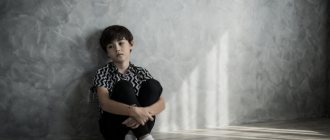Medical history
Stuttering has several related names. It can be found within the framework of such concepts as logoneurosis and laloneurosis, logoclonia, balbucio, as well as battarism named after King Batta, who also suffered from this defect.
On the planet, logoneurosis is observed in 1% of the adult population and 3% of children. Typically, the disease manifests itself in childhood, between 2 and 5 years, when speech begins to develop. Being, so to speak, in a raw, unripe form, it is quite vulnerable and is subject to distortion in the event of any malfunction in the functioning of the nervous system.
The disorder has been known since ancient times. The prophet Moses and the pharaohs of Egypt had such a defect. One of the most famous individuals with logoclonia was Demosthenes, who nevertheless became a famous orator in Ancient Greece. His story is interesting because of how he tried to cope with his shortcomings, what unique techniques the philosopher used to do this. The most popular is pronouncing phrases with stones in the mouth. Along with this, Demosthenes also resorted to reading against the background of the sound of sea waves, pronouncing words mentally, in his mind. Another unconventional method of combating the disease that Demosthenes used was to listen to silence while sitting in a cave. The methods invented by the philosopher to eliminate stuttering turned out to be truly effective, since they turned him into an outstanding speaker.
From ancient times until the 20th century, the disorder was surrounded by a shadow of mystery. Doctors of various specialties tried to unravel his secret, but everything turned out to be in vain. Stuttering was attributed the status of a mysterious illness and was considered the result of damage to the speech organs. They tried to fight it with the help of herbs, spells, assault and even bloody operations in the oral cavity, but this did not bring visible improvements.
At the end of the 19th century there was a revolutionary revolution in understanding the nature of logoneurosis. It was carried out by the Russian psychiatrist I.A. Sikorsky. He came up with the idea that logoclonia originates in childhood at the time of the formation of speech activity. Pathologies of the nervous system and hereditary factors contribute to its occurrence. Sikorsky connected the concept of stuttering with neurosis.
Tartakovsky I.I. made an invaluable contribution to the development of the theory of the disorder. He came up with the idea of treating the disease. In particular, he proved the effectiveness of individual and group psychotherapy in the treatment of illness.
A separate branch, speech therapy, was formed already in the 20th century, and to this day it deals with problems of speech activity.
Peculiarities of development of children with neurosis-like form of stuttering
In the first years of a child’s life, even before the appearance of a speech defect, disturbances in the child’s behavior are observed. He is loud and doesn't sleep well. Physical development lags behind the norm. It is difficult for children to make their movements accurate and coordinated. They are disinhibited and do not understand what can and cannot be done.
In some children, disorders of the autonomic nervous system can be noticed. The child cannot be in hot rooms or closed spaces. Traveling in public transport is difficult for him.
Formation mechanism
The occurrence of laoneurosis is based on the appearance of muscle spasms of the organs responsible for speech formation. These bodies include:
- language;
- lips;
- lower jaw;
- soft sky;
- larynx.
The facial muscles are also involved in the process.
The cause of convulsive contractions of the muscles of the speech-motor apparatus are pathological processes occurring in the brain.
The normal functioning of higher nervous activity is ensured by the harmonious interaction of the processes of excitation and inhibition in the cortex and subcortex of the brain. For a number of reasons, this harmony can be disrupted, leading to hyperexcitation or predominance of inhibition in speech centers. Immature, vulnerable speech areas in children are the first to be affected, leading to stuttering. Such susceptibility is also associated with the absence of inhibitory conditioned reflexes in children, which leads to increased excitability and its spread.
There are special nerve centers in the brain that are responsible for speech activity. The most significant of them:
- Broca's center is the vocal center, the largest speech authority in the brain. Activates the muscles and ligaments that form speech activity;
- Wernicke's center is auditory. Participates in recognizing one’s own and others’ speech;
- associative center - analyzes what was said and gives the command to the voice center to act.
It turns out that all three centers work in a circle. Under the influence of the voice center, we pronounce a phrase, and the auditory center is activated, forcing the associative center to analyze the information. After analysis, it allows you to re-engage the voice area.
This is a well-coordinated mechanism that operates strictly and clearly. The problem arises when the speed of the centers changes. Most often this occurs due to hyperexcitation of Broca's center. The speed of its action increases, which entails the opening of the circle. Excitation is transferred to nearby motor areas of the cerebral cortex. This leads to seizures. Then the vocal center relaxes, the circle closes again.
Another reason lies in the disruption of the activity of the striopallidal system. This system is responsible for the contraction and relaxation of muscles or for maintaining normal muscle tone and its restructuring. If a malfunction occurs in its operation, this leads to an imbalance in the tone of the articulatory, respiratory, and vocal muscles, causing them to spasm. They are under constant tension, which cannot but affect the quality of speech.
Another reason for stuttering is the struggle between the right and left hemispheres of the brain. The first is responsible for rhythmic, clear speech, while the second is responsible for arrhythmic speech. Normally, the right hemisphere should obey the left, but in stutterers they are simultaneously well developed, which is why they enter into competition. Violation of the pattern of their interaction entails confusion in speech class=”aligncenter” width=”700″ height=”482″[/img]
Classification and causes of the disorder
Stuttering can be classified according to different criteria. First of all, laloneurosis is divided into:
- clonic;
- tonic;
- mixed.
Clonic laloneurosis is based on clonic spasms of the muscles of the speech motor apparatus. They are characterized by small muscle twitches, as a result of which a person monotonously repeats the same sound or syllable or word. For example, o-k-k-k-kno.
Tonic convulsions are characterized by prolonged muscle spasms. In this case, the muscle freezes in one position and seems to become stiff. In this case, a manifestation of the disorder will be a long pause in a word or in speech: cow…..cow. The patient has great difficulty speaking.
The mixed form combines the characteristics of both previous forms.
According to localization, logoneurosis is divided into:
- articulatory – accompanied by spasms of the muscles of the face, lips, palate;
- vocal - spasm occurs during the pronunciation of vowel sounds. In this case, the patient may make indistinct sounds instead of a word or “sing” a vowel. In extreme cases, a person cannot say anything at all due to the closure of the vocal cords;
- respiratory – difficulty inhaling or exhaling prevents the patient from speaking freely, creating pauses in speech.
But the most significant classification divides the disorder into neurotic and neurosis-like.
Neurosis-like laloneurosis occurs in the presence of a specific physiological pathology. In such children, deviations in EEG indicators are observed, brain disorders, motor impairments, increased intracranial pressure, and spasmophilia are detected. Reasons for this form of stuttering:
- intrauterine, birth injuries;
- complicated pregnancy of the mother;
- infectious diseases.
Typically, neurosis-like stuttering appears at 3-4 years of age and increases gradually. His character has no situational dependence. Children begin to speak late. Nervous tics, ritual movements, and pronounced speech defects are characteristic.
Boy, 8 years old. The mother's pregnancy was difficult. During childbirth, the child experienced asphyxia. Subsequently, he was registered with a neurologist for perinatal damage to the nervous system. Received treatment. The boy was characterized by increased excitability and motor activity from birth. Stuttering appeared at the age of 3 spontaneously, for no reason, and worsened against the background of colds.
Neurotic laloneurosis occurs without physiological disorders of the nervous system. Initially, the child is characterized by normal and even early speech development. As a rule, it is possible to trace the specific cause that caused the disorder. It may be completely absent in a calm environment and worsen under the influence of stress factors. The following factors predispose to its occurrence:
- overload of the child’s nervous system due to excessive demands from parents;
- early learning of foreign languages;
- severe fear or stressful situation;
- imitating family members who stutter;
- tension in the family, quarrels, conflicts;
- incorrect parenting model: hyper- or hypo-custody;
- early speech development;
- learning costs, poor vocabulary.
Stuttering also exists in 3 stages of its development:
- mild – the defect manifests itself periodically, under the influence of a traumatic situation;
- medium – speech is impaired due to anxiety, emotional stress;
- severe – stuttering is present in the patient constantly.
Stuttering
“Stuttering is a violation of the tempo-rhythmic organization of speech, caused by the convulsive state of the muscles of the speech apparatus.”
(“Speech therapy” edited by Volkova L.S.)
Symptoms. There are two groups of symptoms in Stuttering: biological (physiological) and social (psychological).
Physiological symptoms
Physiological symptoms include speech convulsions, disorders of the central nervous system and physical health, general and speech motor skills.
The main external symptom of Stuttering is convulsions during the speech act. Seizures vary in form ( tonic, clonic and mixed
), by localization (respiratory, vocal, articulatory and mixed) and by frequency.
With tonic convulsions, a short jerky or prolonged spasmodic muscle contraction is observed - tone: “t-poplar”. With clonic convulsions, there is a rhythmic, with less pronounced tension, repetition of the same convulsive muscle movements - clonus: “this-that-poplar.” Such convulsions usually affect the entire respiratory-vocal-articulatory apparatus, because its function is controlled by a holistically working central nervous system and in the process of speech it works as an indivisible whole. Depending on the predominance of convulsions in certain organs of speech, respiratory, vocal or articulatory convulsions are distinguished.
There are 3 forms of breathing disorders with Stuttering: expiratory (convulsive exhalation), inspiratory (convulsive inhalation, sometimes with sobbing) and respiratory (convulsive inhalation and exhalation, often with a break in the word).
Convulsions in the vocal apparatus are characterized as follows: convulsively (convulsively closed vocal folds cannot open in a timely manner - the voice is suddenly interrupted, or a clonic or prolonged convulsion is formed - a bleating intermittent (“A-a-anya”) or a jerky vowel sound (“a-a-anya”) is obtained. , a, a"); opening (the glottis remains open - in this case there is complete silence or whispered speech); vocal, characteristic of children (children draw out vowels in words).
In the articulatory apparatus there are different types of convulsions - labial, lingual and soft palate. They appear more often and more sharply when pronouncing consonant plosive sounds (K, G, P, B, T, D); less often and less intensely - slotted. On voiced sounds, as they are more complex in coordination, convulsions appear more often than on deaf sounds, especially when combined with vowels, as well as at the beginning of a word heading a phrase or paragraph. Consequently, in addition to the difficulties caused by the phonetic nature of the difficult sounds themselves, grammatical factors play an important role: the position of the word in the phrase, the structure of the text, etc. In this case, it is necessary to take into account the content of the utterance, since it is known that stuttering intensifies as the semantic and emotional complications of what is spoken are increased: people stutter less often during a simple narration about well-known things than during difficult reasoning and debate. Students stutter less when reciting well-prepared educational material. The rhythm of speech is of known importance in relation to the frequency of stuttering.
Stuttering is often accompanied by impaired sound pronunciation and lexical and grammatical disorders. Word stress, intonation, and rhythm are disrupted. Speech is intermittent, with unreasonable pauses, repetitions, changes in the volume and tempo of pronunciation, strength, pitch and timbre of the voice associated with the speech intention and emotional state of the stutterer.
Psychological symptoms
The manifestations of Stuttering are also characterized by various disturbances of speech and general motor skills, which can be violent (speech spasms, tics, myoclonus in the muscles of the face, neck) and arbitrary tricks.
Tricks include auxiliary movements that stutterers resort to in order to disguise or facilitate their difficult speech. General motor tension, stiffness of movements, motor restlessness, disinhibition, incoordination or lethargy are often noted.
One of the main phenomena from which a neurotic disorder develops is a feeling of inferiority. And the more the patient fixes his attention on his painful symptom, the more persistent he becomes. This is how a vicious circle is formed from which the patient is in no way able to get out: a painful symptom forces him to fix his attention on it, and as a result, the symptom intensifies and attracts the patient’s attention even more. N.I. Zhinkin, considering stuttering as a disorder of speech self-regulation, notes that the more fear for the outcome of speech increases and the more pronunciation is assessed as defective, the more speech self-regulation is disrupted. After several repetitions, this condition turns into a pathological conditioned reflex and occurs more and more often, now before the start of speech.
The phenomenon of fixation is a reflection of an objectively existing speech defect (speech spasms) in the entire mental activity of a stuttering person.
According to the degree of painful fixation
There are three groups of people who stutter:
1. Zero degree of painful fixation: children do not experience any pain from the awareness of the defect or do not notice it at all. There are no elements of embarrassment, touchiness for one’s incorrect speech, or any attempts to overcome the defect.
2. Moderate degree of painful fixation: older schoolchildren and teenagers experience their defect, are embarrassed by it, hide it, resort to various tricks, and try to communicate less. They are aware of their stuttering, experience a number of inconveniences from it, and try to disguise their deficiency.
3. A pronounced degree of painful fixation: in people who stutter, worries about the defect result in a constantly painful feeling of inferiority, when every action is interpreted through the prism of speech inferiority. These are often teenagers. They focus on speech failures, experience them deeply, and are characterized by withdrawal into illness, morbid suspiciousness, fear of speech, people, situations, etc.
Awareness of a speech defect and unsuccessful attempts to get rid of it or at least disguise it give rise to various psychological characteristics in people who stutter, such as vulnerability, defenselessness, fearfulness, timidity, suggestibility and much more.
Depending on the favorable or unfavorable conditions in which a child grows up and is brought up, as well as on his premorbid characteristics, mental phenomena can manifest themselves to varying degrees and for a short time, or be consolidated and develop into persistent mental states and personality traits, generally determining the psychological characteristics of people who stutter. Attempts to disguise speech difficulties give rise to various non-speech and speech tricks in people who stutter, which are observed in general motor skills (movements of the arms, legs, body, head, etc.); less often - in speech motor skills (biting the tip of the tongue, lower lip, licking lips, smacking, silent articulation of sounds, etc.) in the form of auxiliary sounds, their combinations or words (emboli): uh, and, well, here, yes and etc.
There are three degrees of stuttering:
· Mild - they stutter only in an excited state when trying to quickly speak out. In this case, delays are easily overcome, stutterers speak without being embarrassed by their defect; · Medium - in a calm state and in a familiar environment they speak easily and stutter little, in an emotional state severe stuttering appears; · Severe - they stutter throughout the entire speech, constantly, with accompanying movements.
Types of stuttering
:
· Constant - stuttering, having arisen, manifests itself relatively constantly in various forms of speech, situations, etc. · Wavy - stuttering sometimes intensifies, sometimes weakens, but does not completely disappear · Recurrent - having disappeared, stuttering appears again, i.e. a relapse occurs, the return of stuttering after quite long periods of free, hesitating speech.
Forecast
overcoming stuttering depends on many conditions, primarily on its mechanisms, on the timing of the onset of complex influence and the completeness of its application. But first of all - from the desire of the stutterer himself. In most cases, the prognosis for stuttering is favorable and social adaptation of stutterers is achieved to a high degree.
(“Speech therapy” edited by Volkova L.S.)
Comment from speech therapist Irina Petrovna 11/25/2010
Definition
Stuttering refers to a group of speech disorders caused by a violation of the use of means of communication
. Those. a person has all the means to communicate (voice, articulation, words...), but the process of communication itself is difficult. Stuttering is characterized by psychological (fear of speech) and physiological (speech spasms) features.
Why is Stuttering considered a severe speech disorder? From whatever point of view stuttering is considered, speech pathologists always note the complexity of symptoms: speech convulsions, speech breathing disturbances, disturbances in the tempo and rhythm of speech, intonation coloring of statements, logical (semantic) stresses, phonetic and grammatical disorders, psychological difficulties (logoneurosis, tendency to introspection, defensive tricks, neurotic personality type....). In modern speech therapy it is customary to talk about the triad of stuttering
– speech convulsions, fear of speech and the desire to hide the defect.
Causes
Very often parents say, “The child stutters after he was scared by a dog, a cow...”.
Fear could be a trigger, but not the cause of stuttering. After all, in childhood we were all frightened, if not by dogs, then by loud noises, quarrels, etc., but not every one of us stutters. Most often, stuttering occurs when there is already an existing predisposition, due to the special structure of the cerebral cortex. Modern research says that there are 3 options for the occurrence of stuttering: 1. Stuttering appears “against the background of delayed speech ontogenesis.” At the same time, the children did not have a “fright” (psychotraumatic situation), but verbal (verbal) speech appeared later than normal, while the child may experience general motor awkwardness, impaired fine motor skills, somatic weakness (diseases), difficulties in determining right and left ... In this case, stuttering occurs due to the fact that the brain cannot cope with the increased speech load. Therefore, when in kindergarten such a child is given poems that are difficult to understand and reproduce to memorize (a long line, many long words with a complex syllabic structure, with a large number of consonant clusters), the child’s brain simply does not have time to process this entire flow of information, a time shift occurs - stuttering, stuttering again, let's add unpleasant emotions here (“Repeat!”, “Wrong!”, “You won’t tell the poem to Santa Claus!”) - hello, stuttering. Sometimes even speech development classes can lead to stuttering, because... This is also an increase in speech load. This does not mean that you should not practice speech correction with young children. You just need to do this carefully, perhaps stretching it out over time, gradually increasing the load, praising the child as much as possible, monitoring the emotional state, using conjugate speech more, teaching the child to pronounce words smoothly. Sometimes you have to interrupt classes with a speech therapist or add classes with a psychologist (who, in fact, works more with parents).
2. In the second case, the child’s brain is initially “ready to stutter.” This happens when the brain has not decided which hemisphere is the main one, the left or the right. The left hemisphere is responsible for verbal speech, for the correct distribution of speech units in time. And the right hemisphere is figurative, in it information is stored “in pictures.” And if several pictures can be superimposed on each other at the same time, then the speech flow is strictly sequential. Imagine if the right hemisphere takes over the responsibility for speech, which absolutely does not care what is brought to the surface in what order. This is where a glitch occurs in the program, speech spasm - emotions - stuttering.
3. The third case is neurotic stuttering. Initially, the child's brain works correctly. But if he is exposed to a traumatic situation for a long time, or the stress is extremely strong, then stuttering may occur. Stuttering also occurs in a child with primary developmental neurosis, when the child’s relationship with the world is uncomfortable or inadequate. “Hereditary” stuttering can occur if parents passed on to their child a type of nervous activity (sometimes they say temperament) or their own neurosis - an anxious mother “infects” the child with neurosis.
Mechanism
Stuttering is made up of several interrelated things - first of all, a speech spasm
, which can manifest strongly from the very beginning or grow gradually (depending on the type of stuttering), emotions are added to it (anxiety, fear) - at this moment the defect is fixed.
Until this moment, stuttering is quite easily reversible, if adults behave correctly, relieve the child from a stressful situation, relieve negative emotions, calm the child, and most importantly, do not panic themselves, turn to a specialist (a psychologist or speech therapist) - up to 50% of cases of stuttering go away by themselves. But this only applies to cases with young children, when only a spasm manifested itself, and not the entire triad of stuttering. But if the convulsions are firmly associated in the child’s mind with the fear of speech
... Subsequently, to these two components, a third root of stuttering is added -
awareness of the defect
, manifested in tricks, the desire to hide the defect. The stuttering tree is in full bloom. Those. if there is awareness of the defect, if the thought of speaking causes fear, stuttering will not disappear by itself.
So, the basis of stuttering is a mismatch in the operation of the “computer” - the human brain, which, for various reasons, produces and receives speech signals in the wrong sequence (for example, the vocal folds closed before the exhalation began, a signal is sent to the brain about an “error”, back with a delay, a signal is received to correct the error, again closing, delay, again an error - a spasm results). But while there is no fixation and awareness, it is too early to talk about stuttering.
Therefore, in children it is sometimes worth talking about hesitations as natural child iterations (repetitions of syllables or sounds). They happen when the child still does not have enough vocabulary to fully convey to his mother his thoughts, feelings and, most importantly, emotions. For example, he went to the circus. There was so much new, colorful, fun... Try, calmly tell your mother about this, when you don’t even know such words yet. So it turns out: “Ma, ma, ma, and there, there, there... monkeys, ki, ki and elephants, and dogs, ki, ki...” - all these “ki, ki” are a way of stalling for time to pick up next word. There is nothing wrong with children's iterations; it is a natural phenomenon. But they can develop into a wonderful neurotic stutter if adults, instead of calming the child, supporting him, suggesting a word, start to get scared themselves: “Oh, he stutters! Don’t rush, repeat it correctly again!...”, the baby sees that instead of joy, his mother for some reason feels fear, which means he also needs to be scared. Do you notice how that same negative emotion is superimposed on the hesitation? There's only a little time left before stuttering...
Sometimes stuttering can be a symptom of some mental or neurological problem. Therefore, it is imperative to undergo examination by a speech therapist, psychologist and neurologist.
Treatment. Forecast
All people who stutter are concerned about the question: is stuttering treatable?
Yes, it is being treated. There are several methods that work and give very good results. This is the technique of L.Z. Andronova-Harutyunyan, method by Yu.B. Nekrasova and the technique of N.L. Karpova. If you dream of a “pill”, I’ll disappoint you, they haven’t invented one. And they are unlikely to come up with it, because you already understand that stuttering is a problem of the individual, and not of chemical processes in the body. To overcome stuttering, to completely get rid of it, you will need the active participation of the stutterer himself, hard work, and the support of loved ones. The joint work of a speech therapist and a stutterer, with the possible support of a neurologist and psychologist, the result is achievable. According to Andronova’s method (Probability of cure 95%), the main course lasts 24 days, independent consolidation of high-quality non-convulsive speech - throughout the year. The question is often asked - how to cure yourself, how to alleviate stuttering, how to quickly and painlessly, quickly and easily get rid of stuttering? You should not look for easy ways, such as anti-stuttering pills, to alleviate stuttering - you need to defeat it once and for all. And attempts at “relief” - maybe this is also a stuttering trick? Hypnosis as a remedy for stuttering, unfortunately, does not provide a long-term effect - due to the fact that in the case of hypnosis, responsibility for the result is placed on another person, and with the next stress, the mindset for non-convulsive speech disappears. If a person himself (with the help of a speech therapist!) has learned to speak without stuttering, under such stress he will be able to return to calm on his own; after hypnosis he does not have such an opportunity. Worse, in this case the person generally ceases to believe in the possibility of a cure.
I express my deep gratitude to Liliya Zinovievna Andronova-Harutyunyan, who taught us a course on stuttering, gave us her methodology, and taught us how to effectively treat stuttering.
«With all responsibility, we must emphasize that in our practice we have not encountered forms of incurable stuttering. Moreover, sometimes severe forms of this disease were cured more easily and reliably than mild ones. Apparently, success in this case was explained by a more powerful volitional message, a greater “need” for healing
».
(L.Z. Andronova-Harutyunyan)
General speech underdevelopment. OHP 1, 2, 3, 4 level. The child speaks poorly.
Organic brain lesions with Aphasia, Alalia, Dysarthria, Stuttering and speech tempo disorders.
Severe speech disorders. TNR. Motor and sensory alalia, dysarthria, rhinolalia, stuttering, childhood aphasia
Differential diagnosis (difference) between tachylalia and stuttering.
Differential diagnosis of speech tempo and rhythm disorders from similar diseases
Bilingualism, bilingualism and speech disorders
Manifestations
There is no one specific symptom that can characterize the disorder. In the minds of most people, stuttering manifests itself as a rhythmic repetition of individual sounds or syllables. For example, mm-m-ma-ma. However, this is not the only symptom of the disease.
Manifestations of laoneurosis include excessive stretching of speech units, long pauses during a conversation, and swallowing of words. A person may experience hesitation in statements and difficulties in pronouncing words.
Often the face of a person who stutters is distorted by grimaces and tics. This is a kind of attempt to cope with a hated defect.
With spasms of the respiratory muscles, the patient experiences breathing problems. There is a feeling as if he is suffocating.
Inability to speak leads to mental imbalance. Such people are nervous and aggressive; children are withdrawn and avoid communication for fear of ridicule from their peers. The child refuses to go to kindergarten and does not want to play with other children. His sleep and appetite are disturbed.
Do not think that impaired speech does not entail any consequences. It's not like that at all. If you don’t deal with your baby’s problem in time, you may end up with:
- mental retardation;
- problems with learning and learning at school;
- enuresis;
- disruption of the gastrointestinal tract;
- character accentuations, neuroses;
- As you grow older, you experience difficulties in obtaining a profession and further employment.
Often, stuttering provokes the formation of phobias and defensive ritual movements. Among the possible phobic options are logophobia - fear of talking, social phobia - fear of people leading to social isolation, glossophobia - fear of public speaking.
People with logoneurosis develop a system of protective rituals for themselves. Among students, touching their forehead with their palm is common - a sign of intense thinking, and squeezing the table top with their fingers. In adults, when communicating with superiors, the following is observed:
- trampling from foot to foot;
- touching the earlobe;
- patting your hand on your thigh.
In addition, patients form rituals similar to obsessive actions: knock on wood, turn around 3 times around its axis.
Boy, 11 years old. Diagnosis: “Stuttering, severe, mixed form. Ritual movements. Logophobia." He was raised by suspicious, overprotective parents. Despite the fact that his classmates treated him well, he was overly worried about his stuttering and feared that he would become an object of ridicule.
The child is characterized by increased pedantry in relation to everything related to school and anxiety. He is constantly worried about his and his parents’ health. Against the background of stuttering, he developed obsessive rituals that turned into the whole system. So, before leaving for school, he needs to pull the button on his clothes 3 times, then knock three times and finally shift from foot to foot. If the ritual was interrupted, the child begins the sequence again. The boy claims that this relieves tension and he worries less about his defect.
In the case of stuttering, you should know that the sooner therapy is started, the higher the chances of recovery. The insidiousness of the disorder is that it is prone to recurrence.
Thus, the young man claimed that he managed to get rid of logoneurosis in 1.5 months. Rejoicing, he stopped studying, and the disorder returned after a while. Then the guy realized that the disease was not so simple and required a careful, thoughtful approach. He subsequently created a website for people with stuttering, zaikanie . com , designed to help those in need overcome this unpleasant disease.







